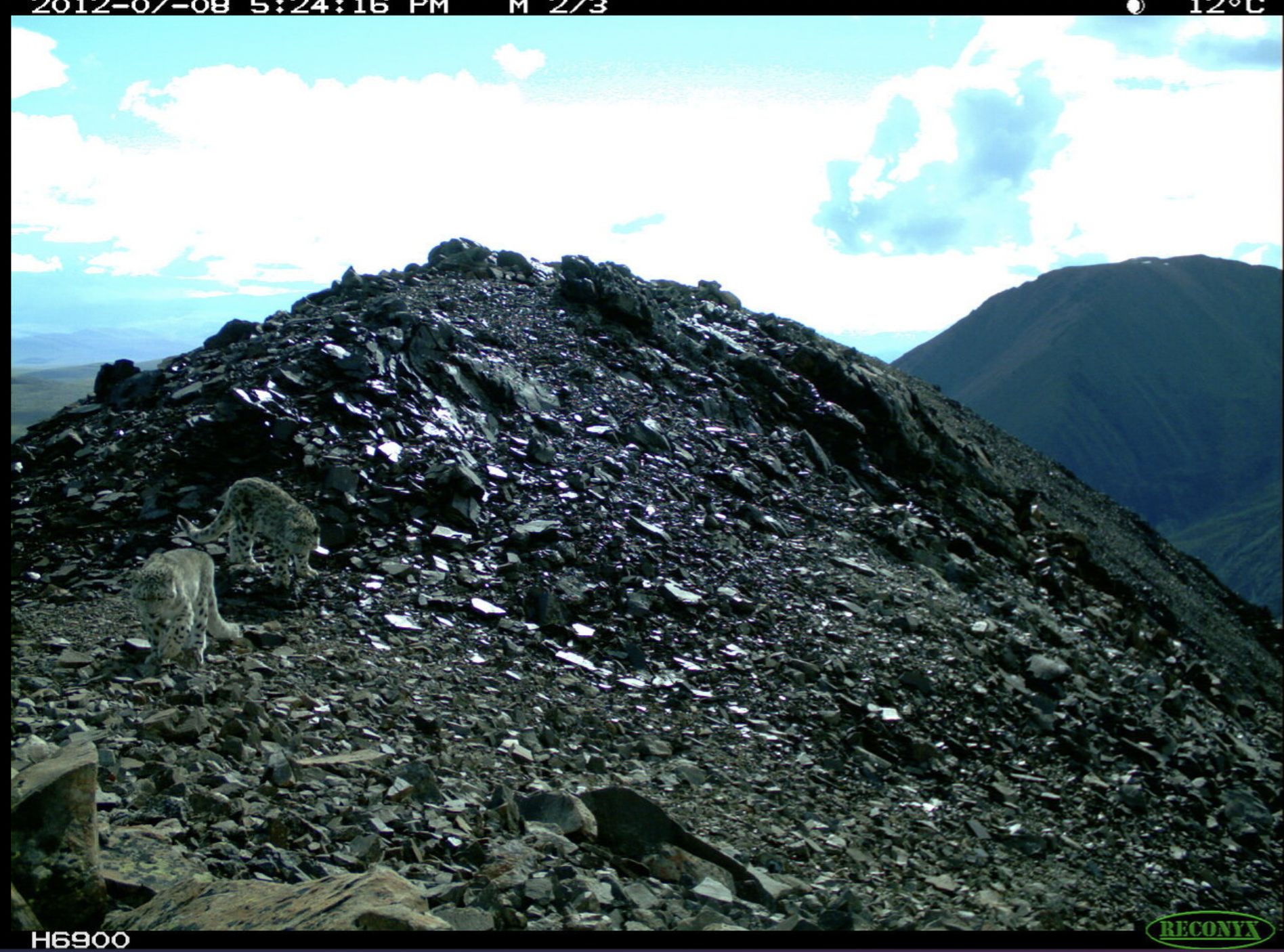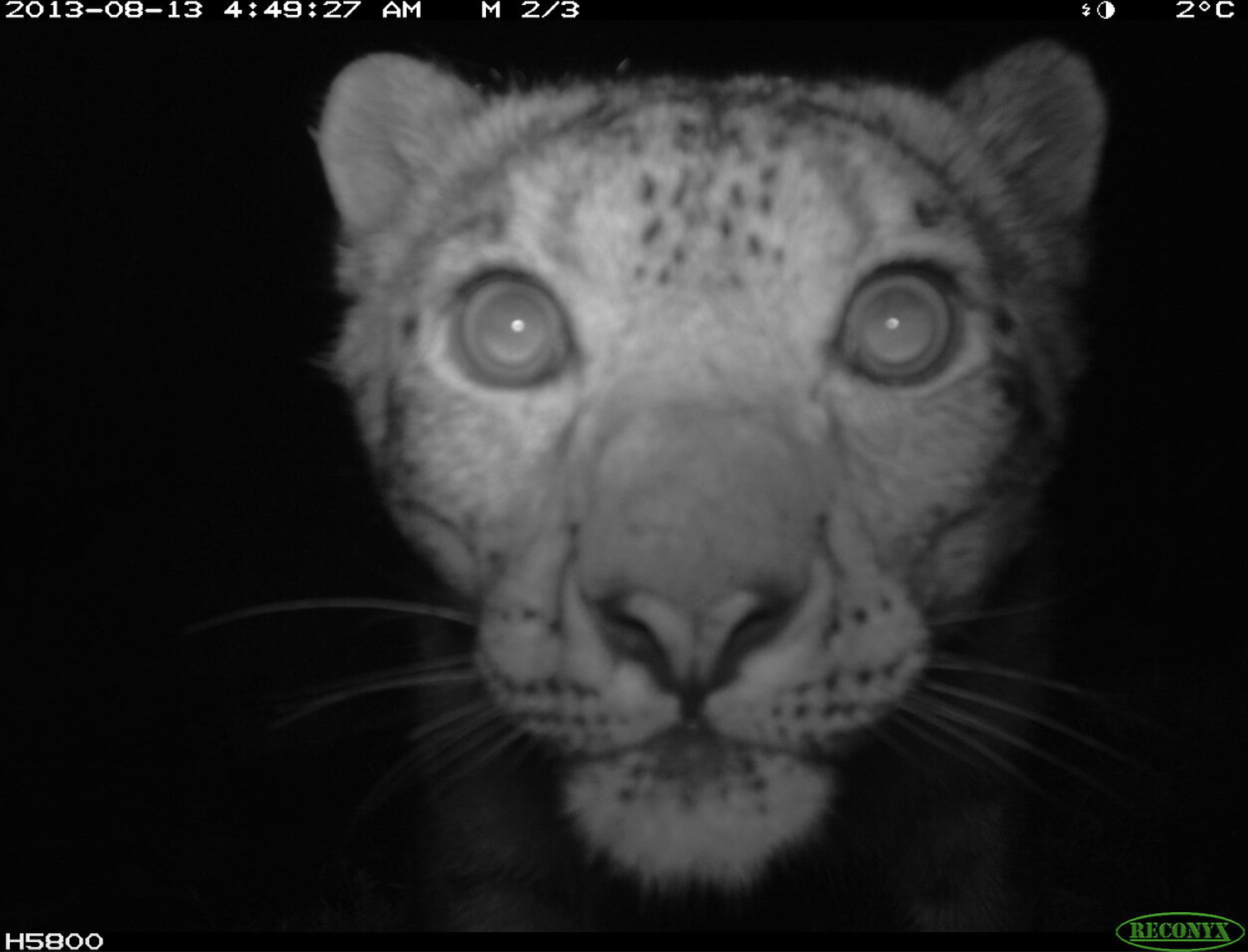Press Release Shared by WWF Russia

Snow leopards named Khorgai and Guta are most likely the world’s oldest known couple of snow leopards living in the wild. Both are at least 13 years old, this is the almost maximum recorded age of the snow leopard in nature. In zoos, with enough food and in comfortable conditions, snow leopards can live up to 21 years. They met at least 10 years ago and have at least two litters of cubs together.
“WWF-Russia is confident in the age of Khorgai and Guta, we, together with our partners, have been camera trapping them since 2011-2012. Such old snow leopards are very rare in the wild. Snow leopards at the age of 13 have been recorded in the wild, for example, in Mongolia, but this is the first time a mating couple of snow leopards of this old age has been recorded. Both snow leopards live on the Chikhachev Ridge in the Altai Republic at the border with Mongolia. Being that old proves the living conditions of these snow leopards, it is an indicator of the well-being of this couple, which underlines the importance of Chikhachev Ridge, as a snow leopard habitat. This mountain bridge on the border with Mongolia allows snow leopards migrate from one country to another”, says Alexander Karnaukhov, Senior Coordinator of Altai-Sayan Branch of WWF Russia.
- Guta, female snow leopard
Guta inhabits the Chikhachev Ridge. Camera traps have been monitoring Guta since 2012 when she was captured with cubs, which means that the female was at least 3 years old. She shares the individual sites with Khorgai, male snow leopard, so it is clear for the scientists that they are a mating couples and have litters together. Guta’s tail tip is not black like in most snow leopards, but white. It is also curved like a question mark. Her tail leaves characteristic strokes in the snow, by which Guta is easy to recognize.
- Khorgai, male snow leopard
Khorgai is the dominant male. He is also the likely father of the cubs born by the female named Bogusha. The first photographs of Khorgai were taken in 2011. He spends most of the year on the Altai part of the Chikhachev ridge. Without informing the border guards, without a visa, in winter, during heavy snowfalls, Khorgai migrates to Mongolia. It was Khorgai who was the first snow leopard in Altai to be filmed by camera traps in October 2011 on the Chikhachev Ridge; the snow leopard was already at least two years old. Recorded by Khorgai, a senior researcher at the Altai State Biosphere Reserve, Sergei Spitsyn, a legendary Russian researcher of snow leopards. Long-liver Khorgai has become a universal favorite of scientists and spectators. A corn-eared snow leopard, which is easily recognizable by a scar on the cheek and spots on the tail. Khorgai’s tail has a specific pattern of spots: three spots, then two spots and one spot, like symbols in Morse code. Scientists use these patterns to distinguish snow leopards from each other.
Recently each image of Khorgai and Guta is the joy for scientists. It means the snow leopards are alive and safe. The latest images of Khorgai obtained in 2021. Most likely, Khorgai has more offsprings, at least ten, including cubs in Mongolia.
Story shared by WWF- Russia
Oct 22, 2021

